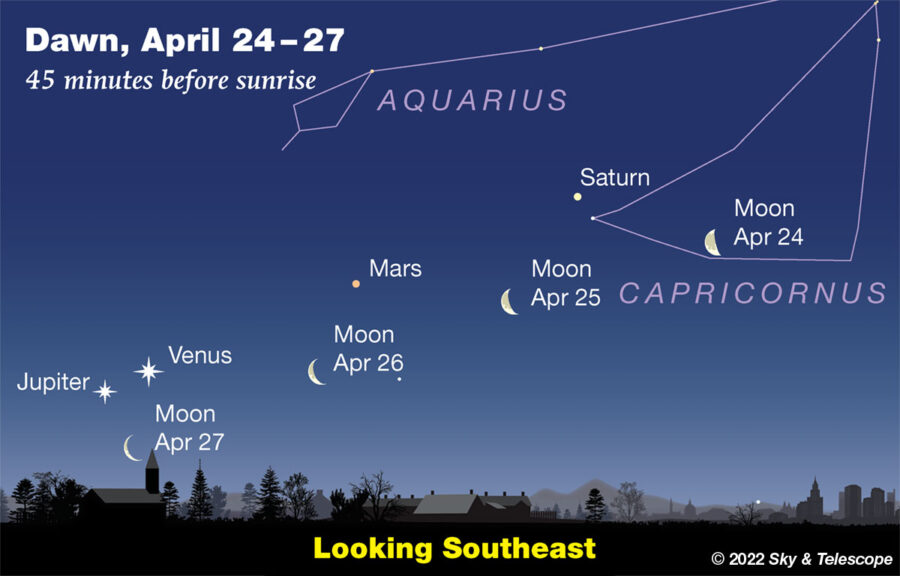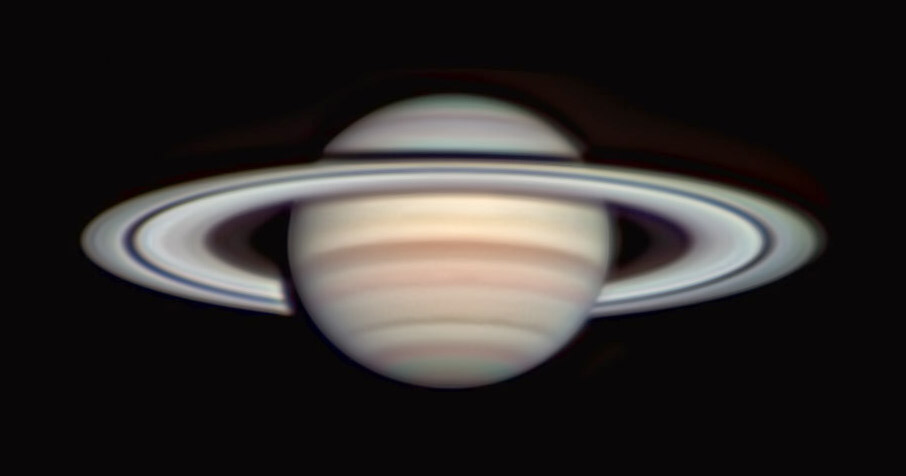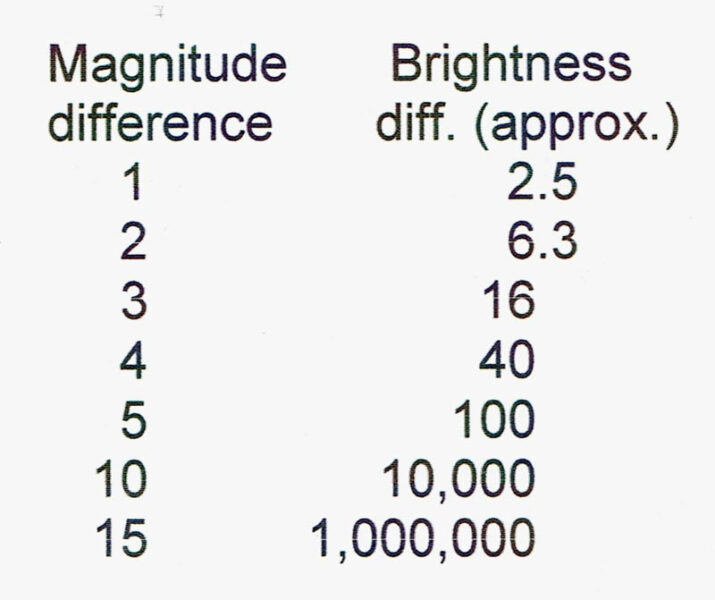FRIDAY, APRIL 22
■ Arcturus is the brightest star high in the east these evenings, shining pale yellow-orange. Look for Spica, paler blue-white, lower right of Arcturus by about three fists at arm's length.
To the right of Spica by half that distance is the distinctive four-star constellation of Corvus, the springtime Crow.
■ The Lyrid meteor shower may still be active late tonight, although the predicted peak of the shower is not timed well for North America. Best time to try watching is from about 11 p.m. until moonrise, as Bob King writes in Celebrate Spring with the Lyrids. The shower is usually pretty weak. Under good observing conditions you might see a Lyrid every 5 minutes or so of steady watching, on average.
■ The last-quarter Moon rises as late as 3 a.m. daylight-saving time Saturday morning. Watch for it to come up far to the lower right of Altair. The Moon (in Capricornus) is exactly last-quarter at 7:56 a.m. Saturday morning EDT.
SATURDAY, APRIL 23
■ Vega, the Summer Star, the zero-magnitude equal of Arcturus, twinkles low in the northeast after nightfall. . . depending on your latitude. The farther north you are the higher it will be. If you're in the latitudes of the southern US, you'll have to wait until a bit later after dark for it to appear.
■ High up above Vega, the Big Dipper is tipping over. The middle star of the Dipper's handle is Mizar. A line from Mizar through its close little companion Alcor (binoculars help!) points the way down to Vega. Or to the place on the horizon where it will soon rise.
■ From Sunday through Wednesday mornings, the waning Moon passes under Saturn, Mars, and the Venus-Jupiter pair low in the southeast, as shown below.

SUNDAY, APRIL 24
■ Look west-southwest as the stars come out. There's Orion tilting down low in his spring orientation, with his belt horizontal. The belt points left toward Sirius and right toward Aldebaran and, farther on, the Pleiades. They'll all soon set.
■ Look very high above Orion for Pollux and Castor, lined up roughly horizontally. They form the top of the huge Arch of Spring.
Lower left of Pollux and Castor, Procyon forms the Arch's left end. Look farther to the lower right from Pollux and Castor for 2nd-magnitude Menkalinan and then brilliant Capella, the Arch's right end.
The Arch is the eastern half of the even larger Winter Hexagon, the rest of which is getting low or setting.
MONDAY, APRIL 25
■ Leo walks horizontally across the meridian these evenings. The Sickle of Leo (the Lion's head, front, and forefoot Regulus) stands upright, with its open side to the right: a backward question mark. Its brightest stars are Regulus, the bottom of the Sickle's handle, and Gamma Leonis (Algieba), above Regulus in the Sickle's crook.
About two and a half fists left of Regulus is Denebola, Leo's tail-tip.
TUESDAY, APRIL 26
■ In late April, the two Dog Stars align vertically as the stars come out in mid-twilight. Look southwest. Brilliant Sirius in Canis Major is rather low. Procyon in Canis Minor stands above it by 25°, two or three fists at arm's length.
WEDNESDAY, APRIL 27
■ Arcturus is climbing high in the east, brilliant at magnitude zero and pale yellow-orange. Next, turn around to the northwest. Descending there is equally bright Capella. They stand at exactly the same height above your horizon in late twilight as the stars are coming out, depending on both your latitude and longitude.
How accurately can you time this event for your location? Like everything constellation-related, you'll find that it happens 4 minutes earlier each night.
THURSDAY, APRIL 28
■ These spring evenings, the long, dim sea serpent Hydra snakes far across the southern sky. Find his head, a rather dim asterism about the width of your thumb at arm's length, in the southwest. It's lower right of Regulus by about two fists at arm's length. Also, a line from Castor through Pollux points to it about 2½ fists away. Hydra's tail stretches all the way to Libra rising in the southeast. Hydra's star pattern, from forehead to tail-tip, is 95° long.
FRIDAY, APRIL 29
■ Venus-Jupiter conjunction. Set your alarm to get up and look low in the southeast about 60 to 45 minutes before your sunrise time Saturday morning. Venus and Jupiter, the two brightest objects after the Sun and Moon, are a spectacularly close ½° apart!
On Sunday morning they'll be only a trace farther apart, with Jupiter now to Venus's upper right.
SATURDAY, APRIL 30
■ Face north just after nightfall, look very high, and you'll find the Pointers, the end stars of the Big Dipper's bowl, on the meridian pointing toward Polaris straight down below. From the Pointers to Polaris is about three fists at arm's length.
Whenever the Pointers point straight down, Vega is rising low in the northeast, Leo walks horizontally high across the south, and the Arch of Spring (see Sunday above) fills the high west.
■ A partial eclipse of the Sun occurs today for the southeastern Pacific and the southern cone of South America. Details.
This Week's Planet Roundup
Mercury is having its best evening apparition of the year right now. As dusk dims, look for it low in the west-northwest about 45 to 60 minutes after sunset. But watch as Mercury fades rapidly this week, from magnitude –0.5 on Friday the 22nd to +0.3 on the 29th. That means it loses half its light. 1
Venus and Jupiter, magnitudes –4.2 and –2.1, respectively, are the two "Morning Stars" shining low in the east-southeast as dawn brightens. They're closing in on each other fast. On the morning of April 23rd, Jupiter is 7° lower left of Venus. On the mornings of April 30th and May 1st, they're ½° apart at the times of dawn for the Americas.
Their actual conjunction happens around 19 hours UT April 30th, when the two planets will be ¼° apart. Around that time, they will be in dawn view for the western Pacific Rim.
Mars and Saturn glimmer to the upper right of Jupiter and Venus, in that order. They're vastly fainter, identical now at magnitude +0.9. Mars, however, is more orange than pale yellow Saturn.
Each morning they're a little farther from Venus and from each other. The Venus-Mars-Saturn line is 25° long on the morning of April 23rd and 33° long by the 30th. The three stay about equally spaced from each other.

Uranus is hidden behind the glare of the Sun.
Neptune is in the background of Venus and Jupiter, but at magnitude 7.9 it's unobservable in the dawn glow.
All descriptions that relate to your horizon — including the words up, down, right, and left — are written for the world's mid-northern latitudes. Descriptions and graphics that also depend on longitude (mainly Moon positions) are for North America.
Eastern Daylight Time, EDT, is Universal Time minus 4 hours. (Universal Time is also called UT, UTC, GMT or Z time.)
Want to become a better astronomer? Learn your way around the constellations. They're the key to locating everything fainter and deeper to hunt with binoculars or a telescope.
This is an outdoor nature hobby. For an easy-to-use constellation guide covering the whole evening sky, use the big monthly map in the center of each issue of Sky & Telescope, the essential magazine of astronomy.
Once you get a telescope, to put it to good use you'll need a detailed, large-scale sky atlas (set of charts). The basic standard is the Pocket Sky Atlas (in either the original or Jumbo Edition), which shows stars to magnitude 7.6.

Next up is the larger and deeper Sky Atlas 2000.0, plotting stars to magnitude 8.5; nearly three times as many. The next up, once you know your way around, are the even larger Interstellarum atlas (stars to magnitude 9.5) or Uranometria 2000.0 (stars to magnitude 9.75). And be sure to read How to Use a Star Chart with a Telescope. (It applies just as much to charts on your phone or tablet as to charts on paper.)
You'll also want a good deep-sky guidebook. A beloved old classic is the three-volume Burnham's Celestial Handbook. An impressive more modern one is the big Night Sky Observer's Guide set (2+ volumes) by Kepple and Sanner.
Can a computerized telescope replace charts? Not for beginners, I don't think, and not on mounts and tripods that are less than top-quality mechanically, meaning heavy and expensive. And as Terence Dickinson and Alan Dyer say in their Backyard Astronomer's Guide, "A full appreciation of the universe cannot come without developing the skills to find things in the sky and understanding how the sky works. This knowledge comes only by spending time under the stars with star maps in hand."
![]() Audio sky tour. Out under the evening sky with your
Audio sky tour. Out under the evening sky with your
earbuds in place, listen to Kelly Beatty's monthly
podcast tour of the heavens above. It's free.
"The dangers of not thinking clearly are much greater now than ever before. It's not that there's something new in our way of thinking, it's that credulous and confused thinking can be much more lethal in ways it was never before."
— Carl Sagan, 1996
"Facts are stubborn things."
— John Adams, 1770
1 . Okay, you've asked how we do that. Why does Mercury fading 0.75 magnitude mean it fades by half? How do you change a magnitude difference to a brightness difference?
Since 1856, the stellar magnitude system has been precisely defined so that 5 magnitudes is exactly a 100-times difference in brightness. So, one magnitude is a change in brightness of the fifth root of 100. Which is 2.512 for all practical purposes.
Here's the formula to use: If △m is the magnitude difference, then
brightness difference = 2.512△m
...which is just a few taps on your scientific calculator.
Some amateurs learn the basic magnitude intervals by heart:

 7
7









Comments
Rod
April 22, 2022 at 6:46 am
Yesterday morning I enjoyed some lovely views of the waning gibbous Moon. [Observed 0550-0620 EDT/0950-1020 UT. Sunrise 0622 EDT, Moon set 0958 EDT/1358 UT. Last Quarter Moon 23-April-2022 1156 UT. Enjoyable early morning views of the waning gibbous Moon in Sagittarius using 10x50 binoculars. Tycho crater area and craters along the terminator line in southern region quite prominent and distinct. Virtual Moon Atlas shows lunar distance 364449 km and angular size 32.79 arcminute. Illumination 73%.]
Wednesday night I tested my 10-inch at 240x views using Arcturus and Mizar. [Observed 1900-2200 EDT. Sunset 1948 EDT. Waning gibbous Moon rise 0048 EDT 21-April-2022. Last Quarter Moon 23-April-2022 1156 UT. I tested views of Arcturus using TeleVue 35-mm PO at 34x. I also tested views of Arcturus using TeleVue 9-mm Nagler at 133x and with TeleVue 1.8x Barlow lens at 240x. Good views of orange circular disk shape when defocused. Mizar as a double star at 240x another good test. Using the TeleVue 9-mm Nagler with TeleVue 1.8x Barlow lens could give some good views of Mars, Jupiter, and Saturn. M51 looked good using the 35-mm PO at 34x, better using the TeleVue 9-mm Nagler at 133x. M51 two components easier to see but still no detailed spiral shape, perhaps too much light pollution about 2100 EDT. As I viewed M51, several satellites passed by moving NE direction and perhaps 4th to 5th magnitude. M65, M66, and NGC 3628 viewed in Leo using TeleVue 35-mm PO at 34x. Good views. My primary objective tonight was to test the XT10i with TeleVue 9-mm Nagler using TeleVue 1.8x Barlow lens for 240x. Primary objective accomplished. I should be able to observe planets at 240x. By 2100 EDT, I could hear great horn owls hooting in the woods, I hooted back :).]
You must be logged in to post a comment.
Rfeldman
April 22, 2022 at 3:09 pm
I think that the Lyrid listing on April 28 got accidentally copied from April 21.
You must be logged in to post a comment.
Rod
April 23, 2022 at 7:01 am
A lovely view along the ecliptic early this morning near 0550 EDT/0950 UT (unaided eyes). I could see the Moon in Capricornus. Last Quarter Moon this morning at 1156 UT/0756 EDT. Saturn was visible in Capricornus, Mars in Aquarius, Venus in Aquarius, and Jupiter in Pisces. Perhaps on 30-April, I will be able to view Jupiter and Venus close paring in their sky positions, 0.5-degree or less apart with my telescope. Temperature 8C this morning. Mostly clear skies, some cirrus scattered around.
You must be logged in to post a comment.
Rod
April 24, 2022 at 7:09 am
Last night I viewed Arcturus using my 90-mm refractor telescope, checking out faint stars visible nearby its position. Magnitudes 9th-11th stars visible using Stellarium and Starry Night Pro Plus 8. [Observed 2000-2130 EDT/0000-0130 UT. Sunset 1951 EDT/2351 UT. I observed Arcturus using TeleVue 40-mm plossl, TeleVue 32-mm plossl, and TeleVue 14-mm Delos eyepieces for 25x to 71x views. Checking faint stars visible around Arcturus with true FOV about 1.8-degrees to 1-degree true FOV. There was a 7 star asterism like a bell shape curve or light curve visible that Stellarium showed, stars ranged 9.40 to 10.55 apparent magnitude. These were some 33 arcminute angular separation from Arcturus (4:00 position, terrestrial upright view) and about 20 arcminute angular size using Stellarium 0.22.1 angle mode. Starry Night Pro Plus 8 shows TYC1472-781-1 in the asterism listed as mv + 9.40. Starry Night Pro Plus 8 listed the 10.55 magnitude star as 10.59. These became distinct near 2040 EDT and later. Other faint stars visible around Arcturus as well, 11th magnitude. M3 globular cluster viewed. At 71x, some halo stars visible. The 10-inch does a better job on globular clusters but this was enjoyable. From 2030-2015 EDT, 3 satellites passed through Bootes in polar orbits, 2nd-5th magnitude, one passed near Arcturus while I viewed using the telescope. Owls were hooting in the woods.]
You must be logged in to post a comment.
Rich
April 24, 2022 at 2:58 pm
A footnote to the footnote:
Some other basic magnitude intervals to learn by heart:
2.5 magnitude difference = 10 brightness difference (exact).
Using the 0.75 magnitude difference = 2 brightness difference:
0.75+0.75 magnitude difference = 2x2 brightness difference.
So 1.5 magnitude difference = 4 brightness difference.
Subtracting this 1.5 magnitude difference from the 5.0 magnitude difference in your footnote table gives:
5.0-1.5 magnitude difference = 100/4 brightness difference
3.5 magnitude difference = 25 brightness difference.
So now you have 1.5, 2.5 and 3.5 to fill in part of the magnitude difference table.
You must be logged in to post a comment.
Rod
April 27, 2022 at 6:26 am
This morning near 0610 EDT I was able to view Venus and Jupiter in 10x50 binocular views. Temperature 8C, lovely early spring morning sky. Sunrise 0614 EDT. Venus and Jupiter are closing fast now in the morning sky. Perhaps starting Friday morning, I will be able to see both planets in my 90-mm refractor telescope at 25x - 35x views. Weather looks good for me for this Venus and Jupiter sky pairing taking place.
You must be logged in to post a comment.
mary beth
April 28, 2022 at 12:03 pm
Hope you get to see the conjunction tonight, looking forward to your report will probably be on next week’s column!
You must be logged in to post a comment.
You must be logged in to post a comment.